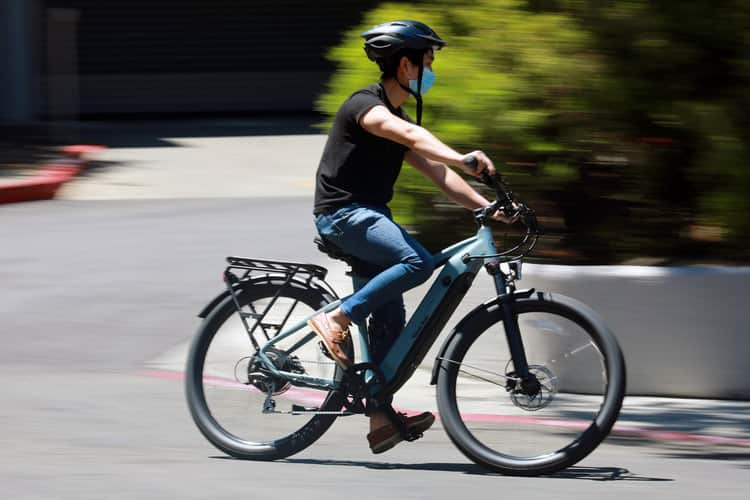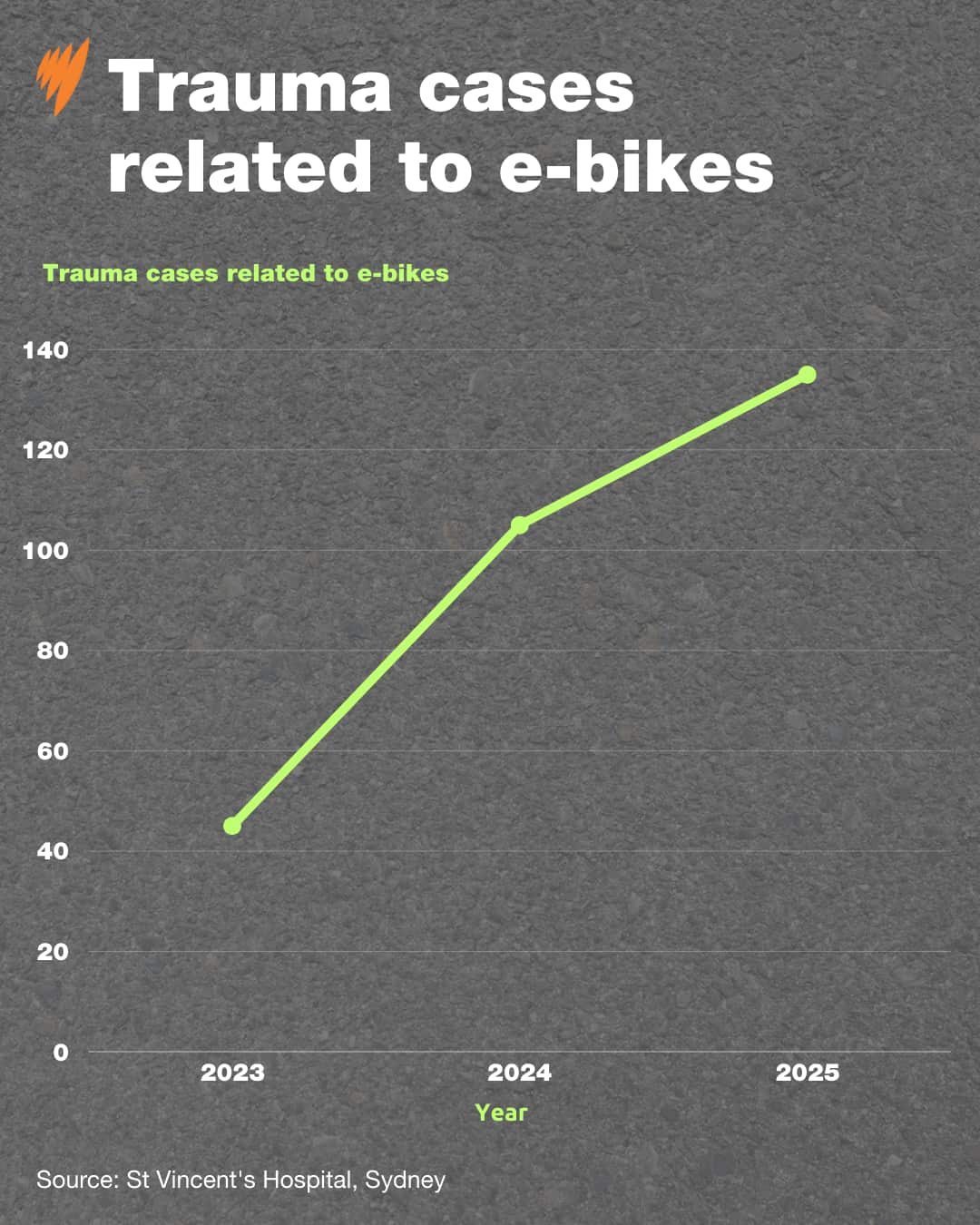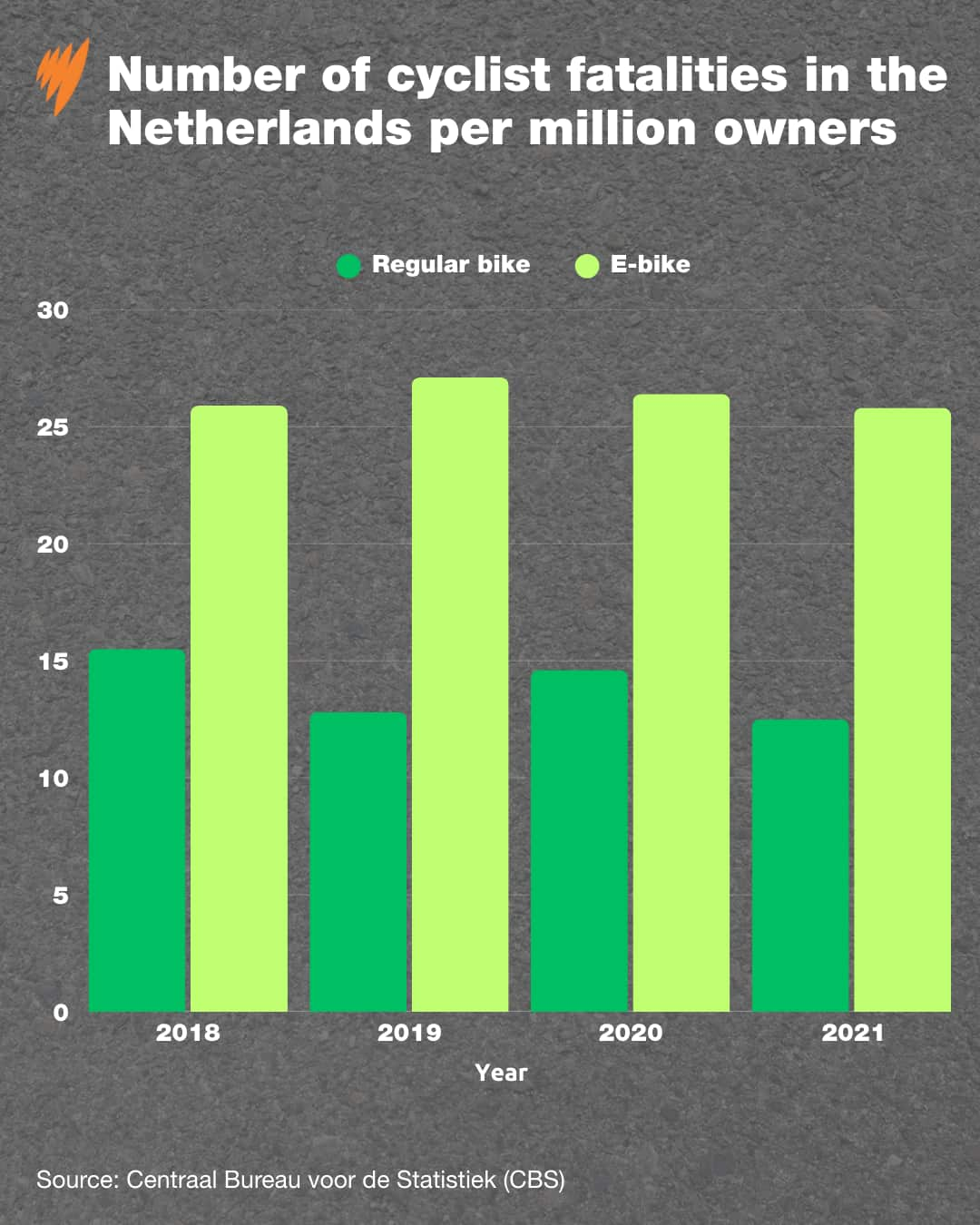Share this @internewscast.com
Daniel (not his real name) shared that after purchasing two e-bikes from a Sydney store for himself and his wife, he decided to modify them to bypass the built-in speed limits.
He emphasized that the speed differential between e-bikes and traffic can create hazardous situations when riders are forced to join the flow of vehicles.

E-bikes currently have a speed limit of 25km/h in Australia.
While he said he has safety concerns about riding his hacked e-bike, he doesn’t see the risks as distinct from riding a normal bike — and overall, the couple enjoy the health, convenience and environmental benefits of riding e-bikes.
Lately, modified e-bikes have attracted attention in Australia. Even though laws across all states and territories mandate that e-bike motors stop running past 25km/h, hacking them is relatively straightforward — as demonstrated by Daniel’s e-bikes.
E-bikes that allow speeds over 25km/h or have motor power exceeding legal limits can be used on private property in all regions. However, on public roads, these are classified as unregistered motorbikes.
‘Severe trauma’
St Vincent’s Hospital in Sydney reported a noticeable increase in trauma cases linked to e-bikes in their emergency department in recent years.

Trauma cases caused by ebikes have increased from 2023 to 2025 at St Vincent’s Hospital in Sydney. Source: SBS
In 2023, the St Vincent’s emergency room treated 45 trauma cases related to e-bikes, whether modified or not. So far this year, there have been 135 cases.
Dr. Tom Crofts, an emergency specialist at the hospital, informed The Feed that e-bike-related trauma cases typically involve “blunt force trauma” injuries resulting from rapid deceleration.
Crofts said it’s “obvious” when patients have been hurt while riding modified e-bikes.
In May this year, 69-year-old Victorian pedestrian William Lothian was killed after being hit by a man riding a modified e-bike.
A Melbourne University researcher investigated fatality statistics of e-bike riders compared to regular cyclists in China and Denmark, finding that e-bike users have a notably higher mortality risk.
Gaps in the law
For example, even though the legal power of an e-bike motor on roads in NSW is 500 watts or in Queensland and Victoria 250 watts, e-bikes with motors of up to 6,000 watts can be imported into Australia.
Introducing the bill, Scamps — who previously worked as an emergency room doctor — said technology has outpaced safety and import regulations.
Many biking advocacy groups support legislation that restricts the e-bikes that can enter Australia, however some argue that speed limits should be increased to 32km/h, in line with US standards.

Data from the Netherlands shows that from 2018-2021, e-bikes were responsible for far more deaths than regular bikes. Source: SBS
Allison McCormack, chief executive of the Bicycle Network, which supports keeping the 25km/h speed limit, told The Feed Australia needs standards for the e-bikes being imported.
“This is why legislation is so important. We need to stop the ability to simply buy something that is an illegal motorbike and bring it into Australia and then subsequently they’re being used on the roads.”
Limit ‘too slow’
Daniel said he doesn’t mind the idea of more regulation on the e-bikes being imported — but he still feels the current speed limits set are unreasonable for everyday e-bike riders.
“I don’t have any issue with a crackdown on those bikes. I do however feel strongly that the 25km/h speed limit is too slow.”











